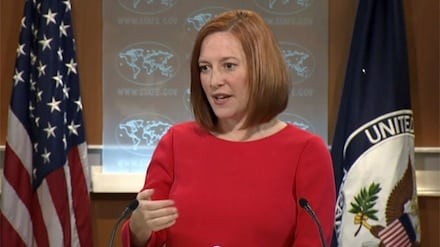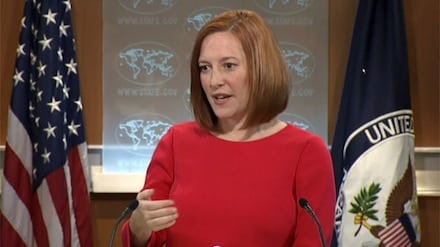You may recall the controversy of a press conference at the State Department was later edited to remove an embarrassing question and answer regarding the Iran negotiations. When the exchange with Fox New Reporter James Rosen was found missing, Elizabeth Trudeau, director of the press office insisted that “Genuinely, we think it was a glitch.” Now, the State Department is admitting that it was not a glitch but an intentional editing of the transcript to remove the exchange. However, State Department spokesman John Kirby insists that they cannot determine who ordered the deletion.
The exchange occurred in 2013 when Rosen got then-spokeswoman Jen Psaki to admit to misleading the press on the Iran nuclear deal. (Psaki is now White House Communications Director). Rosen reminded Psaki that he had asked in February whether there were bilateral talks with Iran on the issue. Then-spokesperson Victoria Nuland denied that such talks were underway by saying “on a government-to-government level, no.” In fact, there were such talks underway. In December, Rosen asked Psaki “Is it the policy of the State Department, where the preservation or the secrecy of secret negotiations is concerned, to lie in order to achieve that goal?” Psaki responded: “James, I think there are times where diplomacy needs privacy in order to progress. This is a good example of that.” That seemed to confirm the obvious that the Administration had lied to the media and the public.
When Rosen later tried to retrieve the exchange however it was gone. When he raised it, it was described as a glitch.
Now, Kirby has admitted that “There was a deliberate request [to delete the footage] – this wasn’t a technical glitch.” He said that an official contacted the video editor to “excise” the exchange. He further admits that it was a State Department public affairs official who made “a specific request … to excise that portion of the briefing.” Yet, he insists in this relatively small group, they could not find the culprit.
Moreover, that would indicate that there is an official at the State Department who is actively hiding his or her conduct in the matter. Since there was no rule expressly prohibiting such editing, there will be no investigation. That is remarkably convenient since, even if there was no rule per se, the Administration admits that the action was “unacceptable.” Moreover, there is an official who took this unacceptable action who has remained silent despite efforts to discover the responsible party. That would seem worthy of an investigation.


